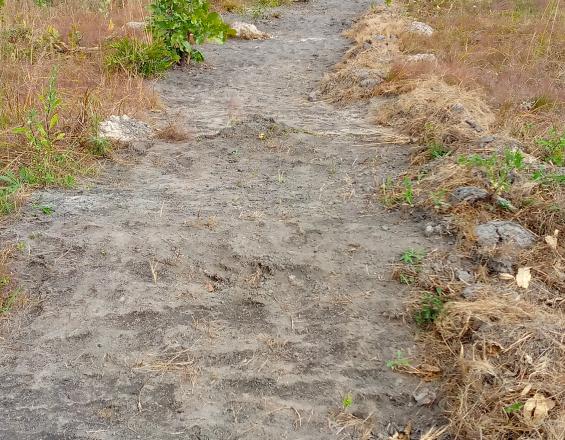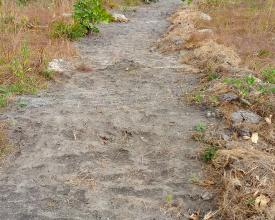forest land restoration efforts

Malawi has a total population of about 18 million of which about 12% have access to electricity. A large proportion uses firewood and charcoal as energy sources. Because of this, our forest reserves continue to dwindle at an accelerated rate. In this regard, the department of forestry partnered with Tetra Tech Malawi to work with communities that are in the vicinity of the forest reserves. The aim is to address the forest degradation challenges through a Modern Cooking for Health Forests (MCHF) project through the provision of improved forestry services, while also promoting forestry friendly enterprises. Since the project's inception, local communities have managed to protect the forest from wildfires and managed to ensure the natural regeneration of fallen trees, so that the identified hotspots have recovered and still continue to recover. The forest resource continues to ensure a steady flow of water in the rivers for irrigation purposes.
Context
Challenges addressed
Interventions from the project have addressed issues of fire outbreaks, illegal felling of trees for charcoal and firewood, soil infertility, biodiversity management and land degradation. Ensuring that the forest will be fully covered has necessitated apiculture activities that have seen livelihoods improve socioeconomically.
Location
Process
Summary of the process
The above-mentioned blocks complement each other systematically to achieve a common goal to firstly mobilize and train local communities in all aspects of the project initiatives. Considering that projects are best implemented by other stakeholders in the areas, it is also crucial to involve all partners in the area. This is why government agencies and other NGOs are involved. The involvement of government personnel aims to ensure sustainability once project phases out. Finally, it is necessary for law and order to adopt by-laws to address the day-to-day management of forest resources. In this regard, local leaders are involved to ensure smooth implementation.
Building Blocks
- Alliance and partnerships development
This is a very crucial parameter because it involves bringing together at least 2 institutions to work towards achieving one goal of the project. Each organization has different roles and activities but these different roles are aimed at achieving the same goals.
Enabling factors
- Frequent stakeholder meetings
- Openness and willingness to share ideas
- Putting in place plans of operations
Lesson learned
In implementing this block it was discovered that impact was huge because there was much focus on every activity being done. This was due to the fact that each institution has its roles clearly defined. The sharing of roles removed pressure from the other implementing partner. But we also learnt that lack of frequent meetings to share ideas resulted in poor service delivery.
- education, training and other capacity development activities
The purpose of this block is to ensure that the communities have the appropriate knowledge and expertise about that particular project initiative so that it is sustained in the long run after the project phases out. It involves field training and setting up demonstration fields that are used as learning points for the communities. This way, it is easy for communities to engage in an initiative that has worked right in their community.
Enabling factors
- Availability of funds to purchase training materials and refreshments for community meetings.
- Ability of communities to change mindset towards particular interventions.
- Well-trained facilitators.
Lesson learned
We learnt that the government staff already available in the Extension Planning Areas were the appropriate facilitators for certain activities. Their involvement also facilitated continued monitoring of activities long after the project phases out
- Enforcement and prosecution
This block is very crucial because it ensures that there is law and order in the communities. It involves setting up by-laws that guide in implementing the project initiative. It also involves putting penalties against particular illegal activities, e.g. cutting trees without permission. These laws are better enforced when the communities make them on their own while facilitated by the extension worker.
Enabling factors
Enabling factors include: involvement of traditional leaders and also making the laws by the whole community at large.
Lesson learned
We learned that stiff penalties for offenders were necessary to deter others from committing similar offenses.
Impacts
The project has engaged the communities in activities such as assisted natural regeneration and fire prevention activities in forest reserves and village forest areas, as well as Farmer Managed Natural Regeneration, and soil and water conservation in customary lands. In the targeted forest areas, shoots are currently blossoming and grown trees are protected from fires and illegal felling for firewood and charcoal. The once degraded land has now a variety of biodiversity in stock. Efforts to venture into beekeeping are in place because of this proper management of the forest resource which will benefit local communities economically.
Beneficiaries
Mainly communities surrounding the forest reserve and specifically they include, ndemera VNRMC and Nthenda VNRMC with their community members.
Sustainable Development Goals
Story
As stated above, the solutions have been in respect of facilitating assisted natural regeneration in forest areas as well as Farmer Managed Natural Regeneration in farm lands. These are environmental approaches that are user friendly especially at local level. Environmental sciences is my area of specialty and it is easy for me to facilitate such approaches on ground. I have always worked with local communities in my previous jobs during similar interventions. For instance, when I was in Mangochi district working with a food and nutrition project I personally engaged several communities in Farmer Managed Natural Regeneration and it worked. I did this for 5 years and as a result, their farmlands had indigenous trees growing. This contributed to soil cover so that erosion was greatly controlled.
